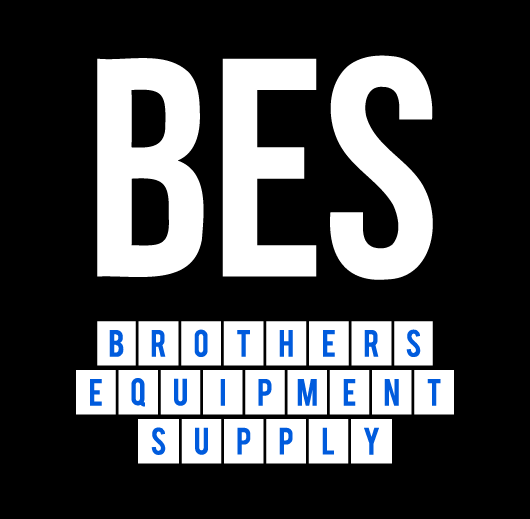
Essential Water Damage Equipment For Plumbers: A Comprehensive Guide
Essential Water Damage Equipment For Plumbers: A Comprehensive Guide
By: Brothers Equipment And Supply
Water damage is a common and costly problem in homes and businesses across Canada.
For plumbers, being equipped with the right water damage equipment is crucial to efficiently address and mitigate these issues.
This article will guide you through the essential tools and equipment that plumbers need to handle water damage effectively.
Let’s get right into it!
Understanding the Role of Plumbers in Water Damage Mitigation
Plumber’s Responsibilities
Plumbers play a vital role in water damage mitigation, from initial detection to complete restoration.
They are often the first responders to water-related emergencies, tasked with stopping leaks, repairing burst pipes, and assessing the extent of the damage.
Their expertise and equipment are critical in preventing further damage and ensuring a swift recovery.
Common Causes of Water Damage
- Natural Disasters: Floods and heavy rains can cause significant water intrusion.
- Plumbing Issues: Burst pipes, leaks, and faulty appliances are common culprits.
- Accidents: Overflowing bathtubs, sinks, and malfunctioning appliances can lead to unexpected water damage.
Key Water Damage Equipment for Plumbers
Moisture Meters
- Function: Measure moisture levels in walls, floors, and ceilings.
- Types: Pin-type vs. pinless moisture meters.
- Usage Tips: Use moisture meters to detect hidden moisture pockets and prevent mold growth. Pin-type meters are ideal for precise measurements, while pinless meters provide a quick overview of moisture levels without damaging surfaces.
- Function: Remove excess moisture from the air to prevent mold growth.
- Types: Refrigerant vs. desiccant dehumidifiers.
- Placement Tips: Place dehumidifiers in the centre of the affected area for maximum efficiency. Refrigerant dehumidifiers are effective in warm, moist environments, while desiccant dehumidifiers work well in cooler conditions.

Infrared Cameras
- Function: Detect hidden water damage and leaks using thermal imaging.
- Benefits: Speed and accuracy in identifying problem areas.
- Usage Tips: Infrared cameras are invaluable for visualizing temperature differences, highlighting moisture-laden areas that are not visible to the naked eye. They are especially useful in large or complex structures.
Water Extraction Equipment
- Types: Submersible pumps, wet/dry vacuums.
- Usage Tips: Submersible pumps are perfect for removing large volumes of water quickly, while wet/dry vacuums are ideal for smaller areas and finishing touches. Always ensure the equipment is properly maintained and ready for emergency use.
Air Movers and Axial Fans
- Function: Promote air circulation to speed up the drying process.
- Types: Axial fans, centrifugal fans.
- Usage Tips: Position air movers strategically to create a cross-flow of air, enhancing drying efficiency. Use axial fans for general drying and centrifugal fans for focused airflow in specific areas.

Leak Detection Equipment
- Types: Acoustic leak detectors, pressure testing equipment.
- Benefits: Early detection and prevention of major water damage.
- Usage Tips: Acoustic leak detectors can pinpoint leaks by listening to the sound of water escaping pipes, while pressure testing equipment can identify weak points in the plumbing system.
Protective Gear
- Types: Waterproof gloves, boots, coveralls.
- Importance: Ensuring safety during water damage mitigation.
- Usage Tips: Always wear protective gear to prevent exposure to contaminated water and hazardous materials. Ensure gear is waterproof and durable for the best protection.
Advanced Tools and Technology for Water Damage Mitigation
Drying Systems
- Function: Comprehensive drying solutions for large-scale water damage.
- Types: Trailer-mounted systems, portable drying systems.
- Usage Tips: Trailer-mounted systems are suitable for large, open areas, while portable systems can be used in confined spaces. These systems are highly effective in reducing drying time and preventing secondary damage.
Flood Barriers and Sandbags
- Function: Prevent water intrusion in high-risk areas.
- Usage Tips: Deploy flood barriers and sandbags in areas prone to flooding or heavy rain to protect properties from water ingress. Ensure they are correctly positioned and secured.
Regular Maintenance and Calibration
Remote Monitoring Systems
- Function: Monitor moisture levels and conditions remotely.
- Benefits: Continuous monitoring for long-term projects.
- Usage Tips: Use remote monitoring systems to track moisture levels over time, ensuring complete drying and preventing hidden moisture issues.
Best Practices for Using Water Damage Equipment
- Importance of keeping equipment in top working condition.
- Tips for regular maintenance and calibration.
- Schedule regular maintenance checks.
- Calibrate equipment according to manufacturer guidelines.
- Replace worn-out parts promptly.
Proper Training and Usage
- The necessity of training plumbers on the proper use of water damage equipment.
- Recommended training programs and resources.
- Enroll in industry-recognized certification programs.
- Attend workshops and seminars.
- Stay updated with the latest techniques and equipment.
Safety Considerations
- Emphasizing the importance of safety protocols.
- Guidelines for safe equipment usage.
- Follow manufacturer’s instructions.
- Use appropriate personal protective equipment.
- Ensure electrical safety when using powered equipment.
Conclusion
Summary of Key Points
Choosing the right water damage equipment is crucial for plumbers to effectively address and mitigate water damage. Essential tools include moisture meters, infrared cameras, water extraction equipment, dehumidifiers, air movers, leak detection equipment, and protective gear.
If you have any questions about our article “Essential Water Damage Equipment For Plumbers: A Comprehensive Guide” or need water damage equipment contact us at sales@brothers-equipment.com or chat with us on LiveChat or social media.
